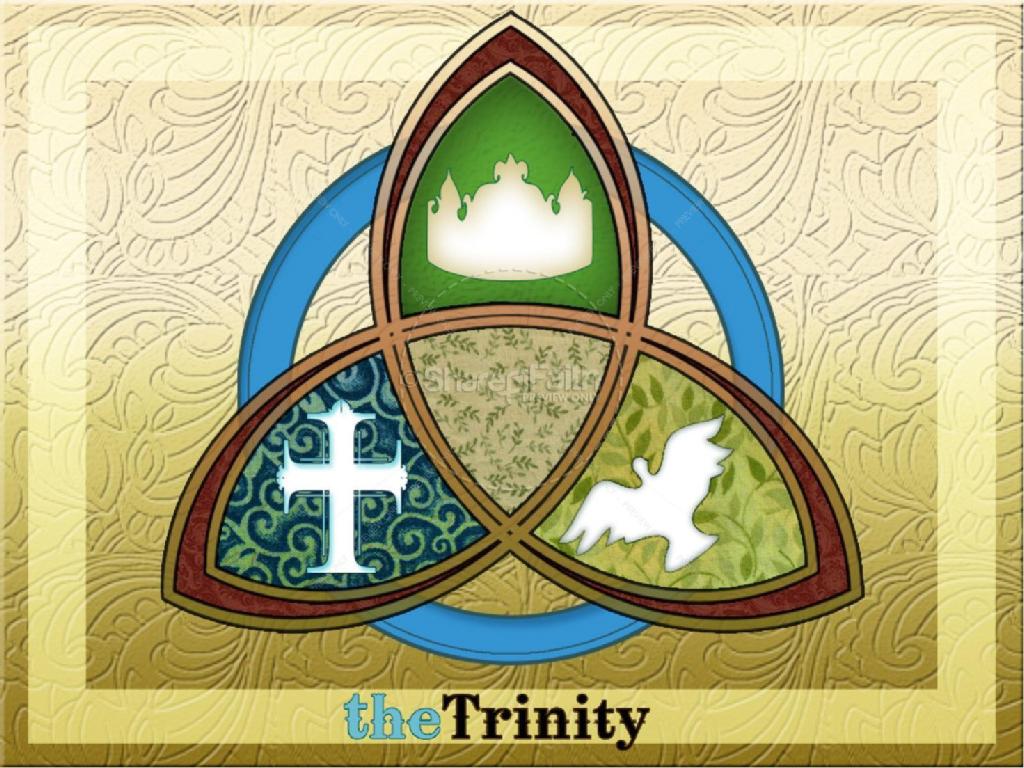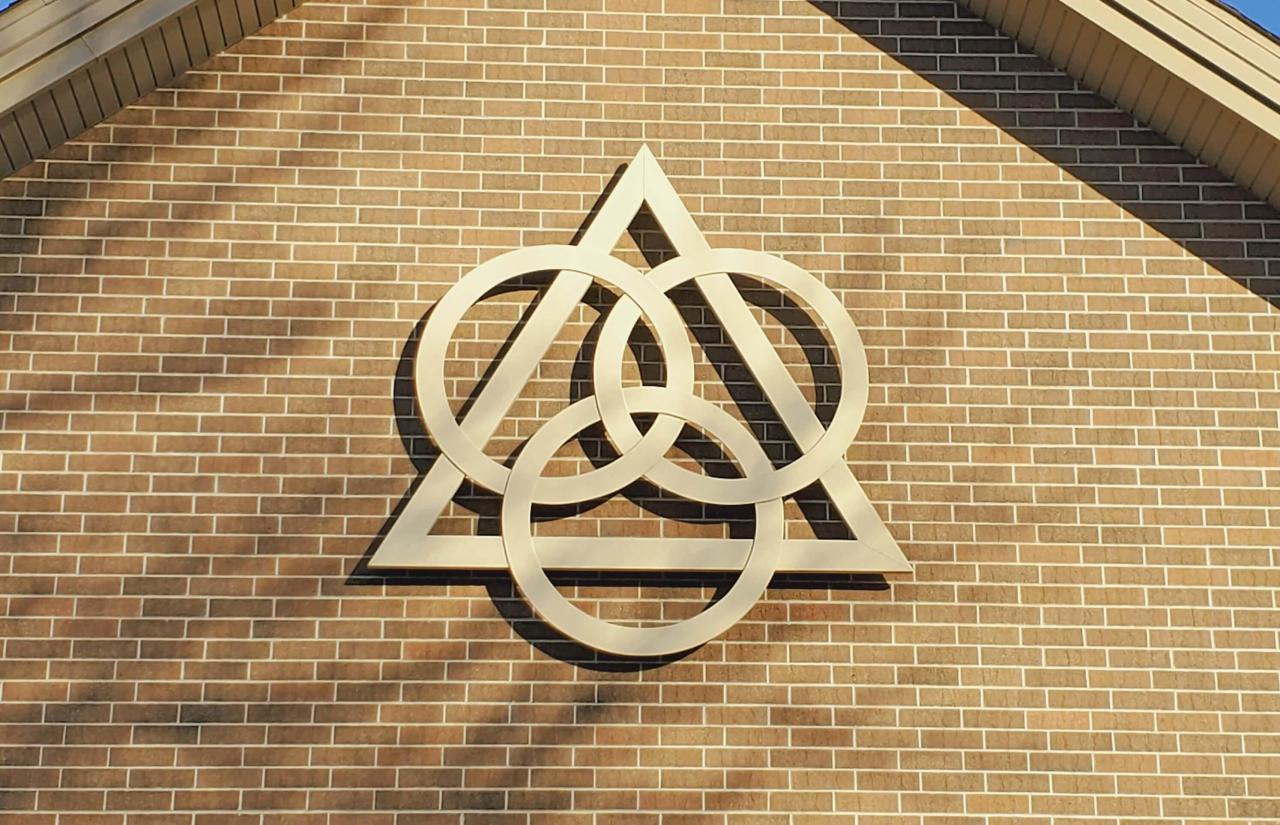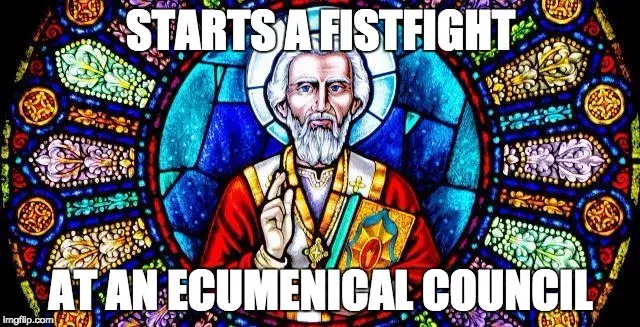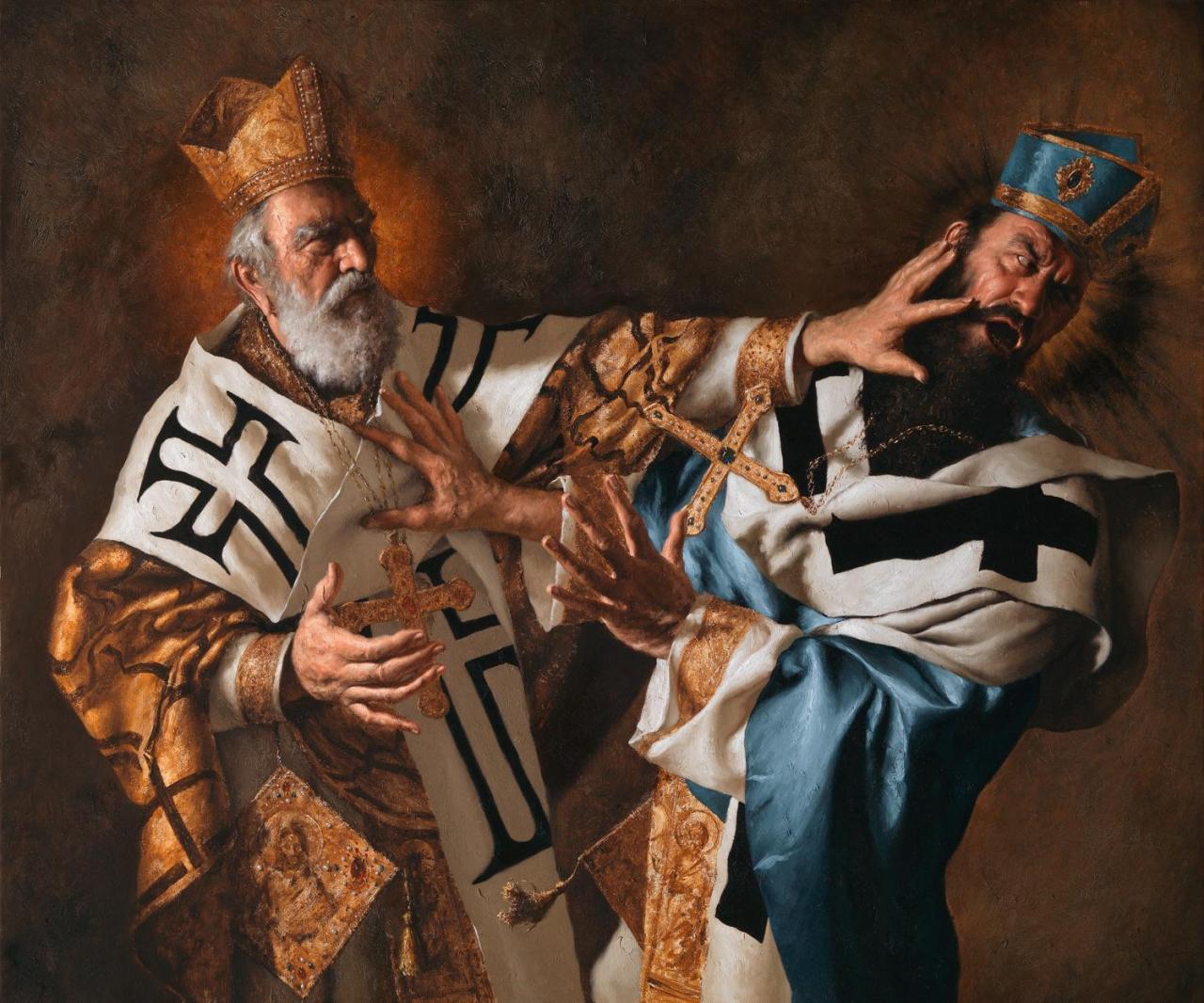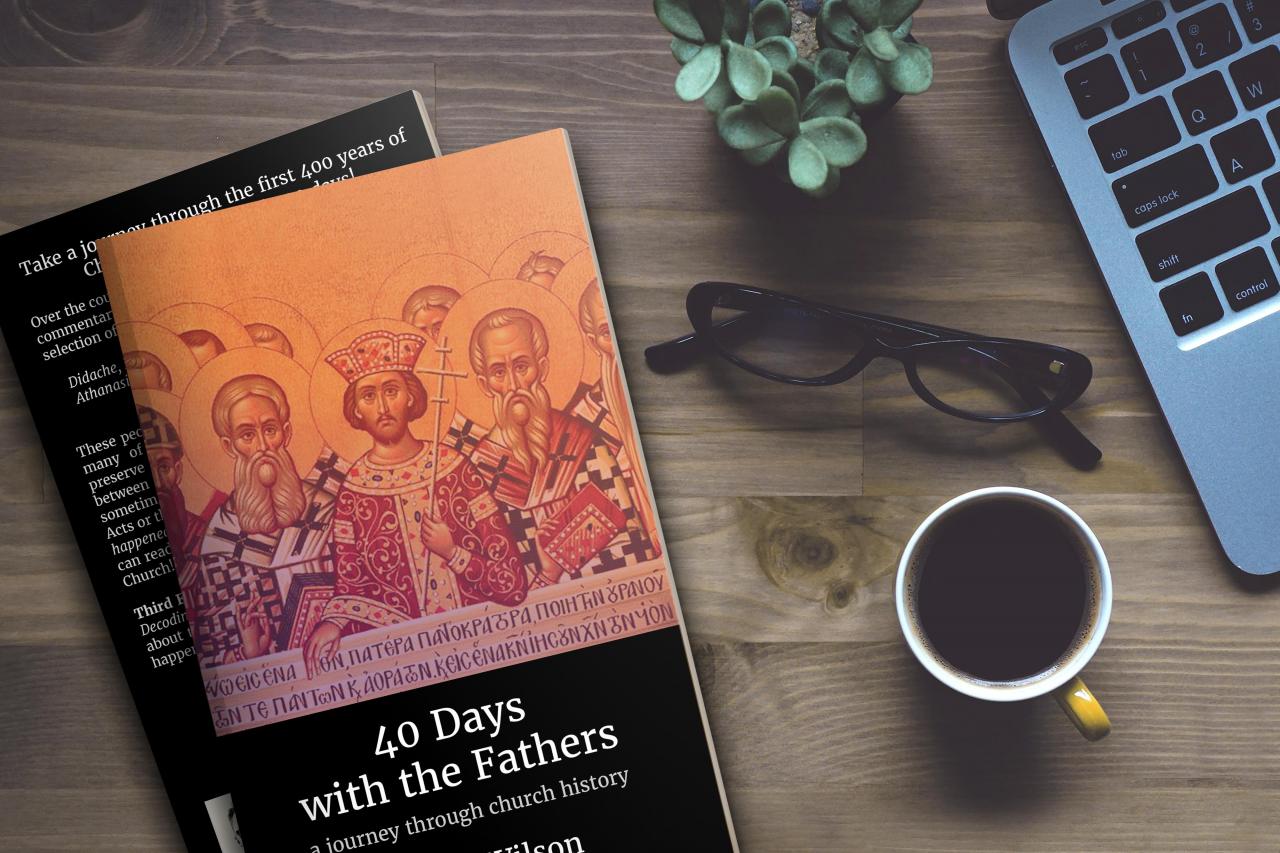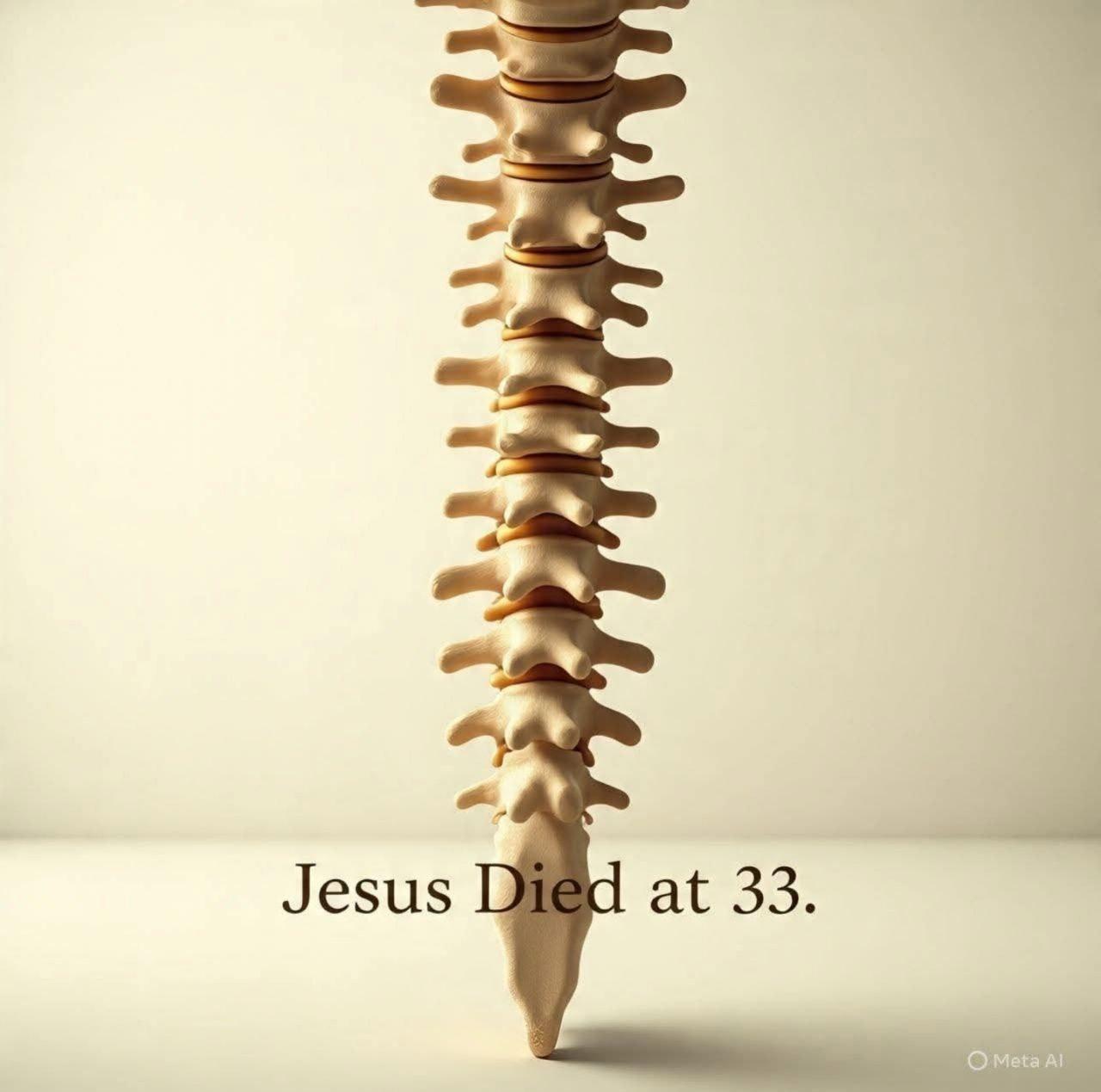Did the Early Church invent the Trinity?
The doctrine and concept of the Trinity is encapsulated in Matthew 28:19, where Jesus instructs the apostles: “Go therefore and make disciples of all nations, baptizing them in the name of the Father and of the Son and of the Holy Spirit”. John, who was very close to Jesus and obviously knew him well, alludes to this teaching frequently in his Gospel, too. For example: John 1:1; John 8:58; John 10:30; and John 10:38.
Yet, despite this, and numerous other examples throughout the New Testament which point towards the threefold nature of God, plenty of myths and legends abound online and in books which state that the divinity of Jesus (and therefore the Trinity) were invented at the Council of Nicaea.
But any serious reader of Church History will see and know that that is complete nonsense. Christians have recognised the divinity of Jesus since the earliest times, even if they didn’t use the word “Trinity”.
First use of the word “Trinity”
The word Trinity was first used as early as A.D. 170 by Theophilus of Antioch, a Patriarch of Antioch, when writing about the creation account and how it relates to the nature of God:
In like manner also the three days which were before the luminaries, are types of the Trinity, of God, and His Word, and His wisdom. And the fourth is the type of man, who needs light, that so there may be God, the Word, wisdom, man. — Theophilus, Of the Fourth Day, Chapter XV
Then in the early third century, around A.D. 208–210, Tertullian was the first to use “Trinity”, “person”, and “substance” to explain that the Father, Son and Holy Spirit:
The numerical order and distribution of the Trinity they assume to be a division of the Unity … yet of one substance, and of one condition, and of one power, inasmuch as He is one God, from whom these degrees and forms and aspects are reckoned, under the name of the Father, and of the Son, and of the Holy Ghost … they are susceptible of number without division … which distributes the Unity into a Trinity, placing in their order the three Persons… — Tertullian, Against Praxeas, chapter 2, 3
Earlier still, we can find Trinitarian language used about God in 1 Clement (~95), the Epistle of Barnabas (~70–96) and the letters of Ignatius (108–110) long before Nicaea codified the terminology. Not only are these very early texts, but the authors are links back to the Apostles themselves, having sat under, and learnt from them. Could they have got such a core belief wrong so soon after learning from Paul or John? It’s highly unlikely. So, to display this as plainly as possible, and to act as a proof against those who would like to rewrite history and say that “the Church invented the Trinity/deity of Christ at Nicaea”, below is a large selection of quotes from Apostolic period onward showing that Christians everywhere for all time have believed Jesus was the divine Son and Word of God, incarnate in flesh, yet still recognised him as God and creator.
Quotes From the Early Church
The Didache (c. 70)
And concerning baptism, baptise this way: Having first said all these things, baptise into the name of the Father, and of the Son, and of the Holy Spirit, in living [running] water. … But if you have neither, pour out water three times upon the head into the name of Father and Son and Holy Spirit. — Didache 7:1, A.D. 70.
Clement of Alexandria (c. 95-140)
Do we not have one God and one Christ and one Spirit of grace which was poured out upon us? And is there not one calling in Christ? — 1 Clement 46:6, ~A.D. 95
Brothers, we ought to think of Jesus Christ, as we do of God, as ‘Judge of the living and the dead’ — 2 Clement 1:1, ~A.D. 95–140
Ignatius of Antioch (c. 108-110)
…to the Church which is at Ephesus, in Asia … and elected through the true passion by the will of the Father, and Jesus Christ, our God… — Letter to the Ephesians 1, A.D. 108–110
For our God, Jesus Christ, was, according to the appointment of God, conceived in the womb by Mary, of the seed of David, but by the Holy Ghost. — Letter to the Ephesians 18:2, A.D. 108–110
Justin Martyr (c. 150)
…and that we reasonably worship Him, having learned that He is the Son of the true God Himself, and holding Him in the second place, and the prophetic Spirit in the third, we will prove. For they proclaim our madness to consist in this, that we give to a crucified man a place second to the unchangeable and eternal God, the Creator of all… — First Apology 13:5–6, ~A.D. 150
Martyrdom Of Polycarp (c. 155)
[Christ] who is the Son of God, we worship, but the martyrs we love as disciples and imitators of the Lord — Martyrdom Of Polycarp 17:3, ~ A.D. 155
Theophilus of Antioch (c. 170)
In like manner also the three days which were before the luminaries, are types of the Trinity, of God, and His Word, and His wisdom. And the fourth is the type of man, who needs light, that so there may be God, the Word, wisdom, man. — Of the Fourth Day, Chapter XV ~A.D. 170
Athenagoras of Athens (c. 176–180)
But the Son of God is the Logos of the Father, in idea and in operation; for after the pattern of Him and by Him were all things made, the Father and the Son being one. And, the Son being in the Father and the Father in the Son, in oneness and power of spirit, the understanding and reason (νοῦς καὶ λόγος) of the Father is the Son of God. But if, in your surpassing intelligence, it occurs to you to inquire what is meant by the Son, I will state briefly that He is the first product of the Father, not as having been brought into existence (for from the beginning, God, who is the eternal mind [νοῦς], had the Logos in Himself, being from eternity instinct with Logos [λογικός]); but inasmuch as He came forth to be the idea and energizing power of all material things, which lay like a nature without attributes, and an inactive earth, the grosser particles being mixed up with the lighter. — Embassy for the Christians, Chapter X ~A.D. 176–180)
Irenaeus (c. 189)
For the Church, although dispersed throughout the whole world even to the ends of the earth, has received from the apostles and from their disciples the faith in one God, the Father Almighty … and in one Jesus Christ, the Son of God, who became flesh for our salvation; and in the Holy Spirit” — Against Heresies 1:10:1, A.D. 189.
Tertullian (c. 216)
We do indeed believe that there is only one God, but we believe that under this dispensation, or, as we say, oikonomia (Gk. οἰκονομία, “economy”), there is also a Son of this one only God, his Word, who proceeded from him and through whom all things were made and without whom nothing was made … We believe he was sent down by the Father, in accord with his own promise, the Holy Spirit, the Paraclete, the sanctifier of the faith of those who believe in the Father and the Son, and in the Holy Spirit” — Against Praxeas 2, A.D. 216.
And at the same time the mystery of the oikonomia is safeguarded, for the unity is distributed in a Trinity. Placed in order, the three are the Father, Son, and Spirit. They are three, however, not in condition, but in degree; not in being, but in form; not in power, but in kind; of one being, however, and one condition and one power, because he is one God of whom degrees and forms and kinds are taken into account in the name of the Father, and of the Son, and of the Holy Spirit” — Against Praxeas 2, A.D. 216.
Keep always in mind the rule of faith which I profess and by which I bear witness that the Father and the Son and the Spirit are inseparable from each other, and then you will understand what is meant by it. Observe now that I say the Father is other [distinct], the Son is other, and the Spirit is other. This statement is wrongly understood by every uneducated or perversely disposed individual, as if it meant diversity and implied by that diversity a separation of Father, Son, and Holy Spirit — Against Praxeas 9, A.D. 216.
Thus the connection of the Father in the Son, and of the Son in the Paraclete, produces three coherent persons, who are yet distinct one from another. These three are, one essence, not one person, as it is said, ‘I and my Father are one’ [John 10:30], in respect of unity of being not singularity of number — Against Praxeas 25, A.D. 216.
Origen (c. 225)
For we do not hold that which the heretics imagine: that some part of the being of God was converted into the Son, or that the Son was procreated by the Father from non-existent substances, that is, from a being outside himself, so that there was a time when he [the Son] did not exist — The Fundamental Doctrines 4:4:1, A.D. 225.
For it is the Trinity alone which exceeds every sense in which not only temporal but even eternal may be understood. It is all other things, indeed, which are outside the Trinity, which are to be measured by time and ages — The Fundamental Doctrines 4:4:1, A.D. 225.
The Father generates an uncreated Son and brings forth a Holy Spirit — not as if He had no previous existence, but because the Father is the origin and source of the Son or Holy Spirit. — On First Principles 1.2.3, A.D. 225
Hippolytus (c. 228)
The Word alone of this God is from God himself, wherefore also the Word is God, being the being of God — Refutation of All Heresies 10:29, A.D. 228.
Pope Dionysius (c. 262)
Next, then, I may properly turn to those who divide and cut apart and destroy the most sacred proclamation of the Church of God, making of it [the Trinity], as it were, three powers, distinct substances, and three godheads. . . . [Some heretics] proclaim that there are in some way three gods, when they divide the sacred unity into three substances foreign to each other and completely separate” — Letter to Dionysius of Alexandria 1, A.D. 262.
Therefore, the divine Trinity must be gathered up and brought together in one, a summit, as it were, I mean the omnipotent God of the universe. . . . It is blasphemy, then, and not a common one but the worst, to say that the Son is in any way a handiwork [creature]. … But if the Son came into being [was created], there was a time when these attributes did not exist; and, consequently, there was a time when God was without them, which is utterly absurd. — Letter to Dionysius of Alexandria 1–2, A.D. 262.
Neither, then, may we divide into three godheads the wonderful and divine unity. . . . Rather, we must believe in God, the Father Almighty; and in Christ Jesus, his Son; and in the Holy Spirit; and that the Word is united to the God of the universe. ‘For,’ he says, ‘The Father and I are one,’ and ‘I am in the Father, and the Father in me’ — Letter to Dionysius of Alexandria 3, A.D. 262.
Gregory the Wonderworker (c. 265)
There is one God. … There is a perfect Trinity, in glory and eternity and sovereignty, neither divided nor estranged. Wherefore there is nothing either created or in servitude in the Trinity; nor anything superinduced, as if at some former period it was non-existent, and at some later period it was introduced. And thus neither was the Son ever wanting to the Father, nor the Spirit to the Son; but without variation and without change, the same Trinity abides ever — Declaration of Faith, A.D. 265.
Post-Nicene Thought
At this point we go beyond the date of the Council of Nicaea (A.D. 325), but I’m including the quotes so you can see how the influence of the previous Church Fathers, and the result of the Council and the Nicene Creed, establish the language of the Trinity more solidly in theological thought.
Sechnall of Ireland (c. 444)
Hymns, with Revelation and the Psalms of God [Patrick] sings, and does expound the same for the edifying of God’s people. This law he holds in the Trinity of the sacred Name and teaches one being in three persons — Hymn in Praise of St. Patrick 22, A.D. 444.
Patrick of Ireland (c. 447)
I bind to myself today the strong power of an invocation of the Trinity — the faith of the Trinity in unity, the Creator of the universe — The Breastplate of St. Patrick 1, A.D. 447.
[T]here is no other God, nor has there been heretofore, nor will there be hereafter, except God the Father unbegotten, without beginning, from whom is all beginning, upholding all things, as we say, and his Son Jesus Christ, whom we likewise to confess to have always been with the Father — before the world’s beginning. . . . Jesus Christ is the Lord and God in whom we believe . . . and who has poured out on us abundantly the Holy Spirit . . . whom we confess and adore as one God in the Trinity of the sacred Name — Confession of St. Patrick 4, A.D. 452.
Augustine (c. 408)
All the Catholic interpreters of the divine books of the Old and New Testaments whom I have been able to read, who wrote before me about the Trinity, which is God, intended to teach in accord with the Scriptures that the Father and the Son and the Holy Spirit are of one and the same substance constituting a divine unity with an inseparable equality; and therefore there are not three gods but one God, although the Father begat the Son, and therefore he who is the Son is not the Father; and the Holy Spirit is neither the Father nor the Son but only the Spirit of the Father and of the Son, himself, too, coequal to the Father and to the Son and belonging to the unity of the Trinity — The Trinity 1:4:7, A.D. 408.
Fulgence of Ruspe (c. 515)
See, in short you have it that the Father is one, the Son another, and the Holy Spirit another; in Person, each is other, but in nature they are not other. In this regard he says: ‘The Father and I, we are one’ (John 10:30). He teaches us that one refers to their nature, and we are to their Persons. In like manner it is said: ‘There are three who bear witness in heaven, the Father, the Word, and the Spirit; and these three are one’ (1 John 5:7)” — The Trinity 4:1–2 ~A.D. 515.
The Rule of Faith (c. 523)
But in the one true God and Trinity it is naturally true not only that God is one but also that he is a Trinity, for the reason that the true God himself is a Trinity of Persons and one in nature. Through this natural unity the whole Father is in the Son and in the Holy Spirit, and the whole Holy Spirit, too, is in the Father and in the Son. None of these is outside any of the others; because no one of them precedes any other of them in eternity or exceeds any other in greatness, or is superior to any other in power” — The Rule of Faith 4, ~ A.D. 523.
* * *
I hope all of these quotes help to display that the acceptance and belief in the Trinity has been a long established doctrine, reaching back to Apostolic times. Even if the language wasn’t as precise in the earlier times, the theme and understanding of God as three persons in one Godhead unity has always been present, and can clearly be seen that this wasn’t some later invention or innovation in doctrine. This is why the Trinity is such a core and essential doctrine, which gets exemplified in the creeds: it is about the very essence and nature of the God who we worship! If we get the very basics wrong, then everything that follows in our theology and beliefs will also be wrong.
Further Reading
- Ante-Nicene Fathers, Vol II: THEOPHILUS: Chapter XV. — Of the Fourth Day. (sacred-texts.com)
- Philip Schaff: ANF03. Latin Christianity: Its Founder, Tertullian — Christian Classics Ethereal Library (ccel.org), Against Praxeas, chapter 2
- Philip Schaff: ANF03. Latin Christianity: Its Founder, Tertullian — Christian Classics Ethereal Library (ccel.org), Against Praxeas, chapter 3
- Author info: Philip Schaff — Christian Classics Ethereal Library (ccel.org)
- The Early Church Fathers | Patristics.info
- Explanation of the Christian doctrine of the Trinity — Apostles Creed (apostles-creed.org)
- Creedal Christians: The Nicene Creed | That Ancient Faith
- Economy (religion) — Wikipedia
- Hall, Christopher A.; Olson, Roger E. (2002). The Trinity (Guides to theology). Grand Rapids, Michigan, United States: Wm. B. Eerdmans Publishing Co. pp. 16–20. ISBN 978–0802848277.
Leave a comment Like Back to Top Seen 5.8K times Liked 0 times
Enjoying this content?
Support my work by becoming a patron on Patreon!
By joining, you help fund the time, research, and effort that goes into creating this content — and you’ll also get access to exclusive perks and updates.
Even a small amount per month makes a real difference. Thank you for your support!
Subscribe to Updates
If you enjoyed this, why not subscribe to free email updates and join over 864 subscribers today!
My new book is out now! Order today wherever you get books
Recent Posts
Luke J. Wilson | 19th August 2025 | Fact-Checking
A poetic post has been circulating widely on Facebook, suggesting that our anatomy mirrors various aspects of Scripture. On the surface it sounds inspiring, but when we take time to weigh its claims, two main problems emerge. The viral post circulating on Facebook [Source] First, some of its imagery unintentionally undermines the pre-existence of Christ, as if Jesus only “held the earth together” for the 33 years of His earthly life. Second, it risks reducing the resurrection to something like biological regeneration, as if Jesus simply restarted after three days, instead of being raised in the miraculous power of God. Alongside these theological dangers, many of the scientific claims are overstated or symbolic rather than factual. Let’s go through them one by one. 1. “Jesus died at 33. The human spine has 33 vertebrae. The same structure that holds us up is the same number of years He held this Earth.” The human spine does generally have 33 vertebrae, but that number includes fused bones (the sacrum and coccyx), and not everyone has the same count. Some people have 32 or 34. More importantly, the Bible never says Jesus was exactly 33 when He died — Luke tells us He began His ministry at “about thirty” (Luke 3:23), and we know His public ministry lasted a few years, but His precise age at death is a tradition, not a biblical statement. See my other recent article examining the age of Jesus here. Theologically, the phrase “the same number of years He held this Earth” is problematic. Jesus did not hold the world together only for 33 years. The eternal Word was with God in the beginning (John 1:1–3), and “in Him all things hold together” (Colossians 1:17). Hebrews says He “sustains all things by His powerful word” (Hebrews 1:3). He has always upheld creation, before His incarnation, during His earthly ministry, and after His resurrection. To imply otherwise is to risk undermining the pre-existence of Christ. 2. “We have 12 ribs on each side. 12 disciples. 12 tribes of Israel. God built His design into our bones.” Most people do have 12 pairs of ribs, though some are born with an extra rib, or fewer. The number 12 is certainly biblical: the 12 tribes of Israel (Genesis 49), the 12 apostles (Matthew 10:1–4), and the 12 gates and foundations of the New Jerusalem (Revelation 21). But there’s no biblical connection between rib count and these symbolic twelves. This is a case of poetic association, not design woven into our bones. The only real mention of ribs in Scripture is when Eve is created from one of Adam’s ribs in Genesis 2:21–22, which has often led to the teaching in some churches that men have one less rib than women (contradicting this new claim)! 3. “The vagus nerve runs from your brain to your heart and gut. It calms storms inside the body. It looks just like a cross.” The vagus nerve is real and remarkable. It regulates heart rate, digestion, and helps calm stress, and doctors are even using vagus nerve stimulation as therapy for epilepsy, depression, and inflammation showing it really does “calm storms” in the body. But it does not look like a cross anatomically. The language about “calming storms” may echo the way Jesus calmed the storm on the Sea of Galilee (Mark 4:39), but here again the poetic flourish stretches science (and Scripture) beyond what’s accurate. 4. “Jesus rose on the third day. Science tells us that when you fast for 3 days, your body starts regenerating. Old cells die. New ones are born. Healing begins. Your body literally resurrects itself.” There’s a serious theological problem here. To equate Jesus’ resurrection with a biological “regeneration” after fasting is to misrepresent what actually happened. Fasting can indeed trigger cell renewal and immune repair, but it cannot bring the dead back to life. It’s still a natural process that happens...
Luke J. Wilson | 08th July 2025 | Islam
“We all worship the same God”. Table of Contents 1) Where YHWH and Allah Appear Similar 2) Where Allah’s Character Contradicts YHWH’s Goodness 3) Where Their Revelations Directly Contradict Each Other 4) YHWH’s Love for the Nations vs. Allah’s Commands to Subjugate 5) Can God Be Seen? What the Bible and Qur’an Say 6) Salvation by Grace vs. Salvation by Works Conclusion: Same God? Or Different Revelations? You’ve heard it from politicians, celebrities, and even some pastors. It’s become something of a modern mantra, trying to shoehorn acceptance of other beliefs and blend all religions into one, especially the Abrahamic ones. But what if the Bible and Qur’an tell different stories? Let’s see what their own words reveal so you can judge for yourself. This Tweet recently caused a stir on social media 1) Where YHWH and Allah Appear Similar Many point out that Jews, Christians, and Muslims share a belief in one eternal Creator God. That’s true — up to a point. Both the Bible and Qur’an describe God as powerful, all-knowing, merciful, and more. Here’s a list comparing some of the common shared attributes between YHWH and Allah, with direct citations from both Scriptures: 26 Shared Attributes of YHWH and Allah According to the Bible (NRSV) and the Qur’an Eternal YHWH: “From everlasting to everlasting you are God.” — Psalm 90:2 Allah: “He is the First and the Last…” — Surah 57:3 Creator YHWH: “In the beginning God created the heavens and the earth.” — Genesis 1:1 Allah: “The Originator of the heavens and the earth…” — Surah 2:117 Omnipotent (All-Powerful) YHWH: “Nothing is too hard for you.” — Jeremiah 32:17 Allah: “Allah is over all things competent.” — Surah 2:20 Omniscient (All-Knowing) YHWH: “Even before a word is on my tongue, O LORD, you know it.” — Psalm 139:4 Allah: “He knows what is on the land and in the sea…” — Surah 6:59 Omnipresent (Present Everywhere) YHWH: “Where can I go from your Spirit?” — Psalm 139:7–10 Allah: “He is with you wherever you are.” — Surah 57:4 Holy YHWH: “Holy, holy, holy is the LORD of hosts.” — Isaiah 6:3 Allah: “The Holy One (Al-Quddus).” — Surah 59:23 Just YHWH: “A God of faithfulness and without injustice.” — Deuteronomy 32:4 Allah: “Is not Allah the most just of judges?” — Surah 95:8 Merciful YHWH: “The LORD, merciful and gracious…” — Exodus 34:6 Allah: “The Most Gracious, the Most Merciful.” — Surah 1:1 Compassionate YHWH: “As a father has compassion on his children…” — Psalm 103:13 Allah: “He is the Forgiving, the Affectionate.” — Surah 85:14 Faithful YHWH: “Great is your faithfulness.” — Lamentations 3:22–23 Allah: “Indeed, the promise of Allah is truth.” — Surah 30:60 Unchanging YHWH: “For I the LORD do not change.” — Malachi 3:6 Allah: “None can change His words.” — Surah 6:115 Sovereign YHWH: “The LORD has established his throne in the heavens…” — Psalm 103:19 Allah: “Blessed is He in whose hand is dominion…” — Surah 67:1 Loving YHWH: “God is love.” — 1 John 4:8 Allah: “Indeed, my Lord is Merciful and Affectionate (Al-Wadud).” — Surah 11:90 Forgiving YHWH: “I will not remember your sins.” — Isaiah 43:25 Allah: “Allah forgives all sins…” — Surah 39:53 Wrathful toward evil YHWH: “The LORD is a jealous and avenging God…” — Nahum 1:2 Allah: “For them is a severe punishment.” — Surah 3:4 One/Unique YHWH: “The LORD is one.” — Deuteronomy 6:4 Allah: “Say: He is Allah, One.” — Surah 112:1 Jealous of worship YHWH: “I the LORD your God am a jealous God.” �...
Luke J. Wilson | 05th June 2025 | Blogging
As we commemorated the 500th anniversary of the Protestant Reformation this year, the familiar image of Martin Luther striding up to the church door in Wittenberg — hammer in hand and fire in his eyes — has once again taken centre stage. It’s a compelling picture, etched into the imagination of many. But as is often the case with historical legends, closer scrutiny tells a far more nuanced and thought-provoking story. The Myth of the Door: Was the Hammer Ever Raised? Cambridge Reformation scholar Richard Rex is one among several historians who have challenged the romanticised narrative. “Strangely,” he observes, “there’s almost no solid evidence that Luther actually went and nailed them to the church door that day, and ample reasons to doubt that he did.” Indeed, the first image of Luther hammering up his 95 Theses doesn’t appear until 1697 — over 180 years after the fact. Eric Metaxas, in his recent biography of Luther, echoes Rex’s scepticism. The earliest confirmed action we can confidently attribute to Luther on 31 October 1517 is not an act of public defiance, but the posting of two private letters to bishops. The famous hammer-blow may never have sounded at all. Conflicting Accounts Philip Melanchthon, Luther’s successor and first biographer, adds another layer of complexity. He claimed Luther “publicly affixed” the Theses to the door of All Saints’ Church, but Melanchthon wasn’t even in Wittenberg at the time. Moreover, Luther himself never mentioned posting the Theses publicly, even when recalling the events years later. Instead, he consistently spoke of writing to the bishops, hoping the matter could be addressed internally. At the time, it was common practice for a university disputation to be announced by posting theses on church doors using printed placards. But no Wittenberg-printed copies of the 95 Theses survive. And while university statutes did require notices to be posted on all church doors in the city, Melanchthon refers only to the Castle Church. It’s plausible Luther may have posted the Theses later, perhaps in mid-November — but even that remains uncertain. What we do know is that the Theses were quickly circulated among Wittenberg’s academic elite and, from there, spread throughout the Holy Roman Empire at a remarkable pace. The Real Spark: Ink, Not Iron If there was a true catalyst for the Reformation, it wasn’t a hammer but a printing press. Luther’s Latin theses were swiftly reproduced as pamphlets in Basel, Leipzig, and Nuremberg. Hundreds of copies were printed before the year’s end, and a German translation soon followed, though it may never have been formally published. Within two weeks, Luther’s arguments were being discussed across Germany. The machinery of mass communication — still in its relative infancy — played a pivotal role in what became a theological, political, and social upheaval. The Letters of a Conscientious Pastor Far from the bold revolutionary of popular imagination, Luther appears in 1517 as a pastor deeply troubled by the abuse of indulgences, writing with respectful concern to those in authority. In his letter to Archbishop Albrecht of Mainz, he humbly addresses the archbishop as “Most Illustrious Prince,” and refers to himself as “the dregs of humanity.” “I, the dregs of humanity, have so much boldness that I have dared to think of a letter to the height of your Sublimity,” he writes — hardly the voice of a man trying to pick a fight. From Whisper to Roar Luther’s initial appeal through formal channels was, predictably, ignored. He was advised not to make trouble. But as opposition mounted and corruption remained unchecked, the once quiet reformer grew louder. His theological convictions deepened, and his public persona evolved. The lion did eventually roar — but not on October 31. A Catholic Reformer, Not a Protestant Founder It’s vital to remem...
Luke J. Wilson | 20th May 2025 | Islam
You are not alone. Around the world, many Muslims — people who already believe in one God, pray, and seek to live righteously — are drawn to know more about Jesus (ʿĪsā in Arabic). Some have heard He is more than a prophet. Some have sensed His presence in a dream or vision. And some simply long to know God more deeply, personally, and truly. So what does it mean to become a Christian? And how can you take that step? This guide is for you. 1. What Christians Believe About God and Jesus ➤ One God, Eternal and Good Christians believe in one God — the same Creator known to Abraham, Moses, and the prophets. But we also believe God is more personal and relational than many realise. In His love, He has revealed Himself as Father, Son (Jesus), and Holy Spirit — not three gods, but one God in three persons. ➤ Jesus Is More Than a Prophet Muslims honour Jesus as a great prophet, born of the virgin Mary. Christians also affirm this — but go further. The Bible teaches that Jesus is the Word of God (Kalimat Allāh), who became flesh to live among us. He performed miracles, healed the sick, raised the dead — and lived without sin.Jesus came not just to teach but to save — to bring us back to God by bearing our sins and rising again in victory over death. 2. Why Do We Need Saving? ➤ The Problem: Sin All people — no matter their religion — struggle with sin. We lie, get angry, feel jealous, act selfishly, or fail to love God fully. The Bible says: “All have sinned and fall short of the glory of God.” (Romans 3:23) Sin separates us from God. And no matter how many good deeds we do, we can never make ourselves perfect or holy before Him. ➤ The Solution: Jesus Because God loves us, He did not leave us in our sin. He sent Jesus, His eternal Word, to live as one of us. Jesus died willingly, offering His life as a sacrifice for our sins, then rose again on the third day. “But God proves his love for us in that while we still were sinners Christ died for us.” (Romans 5:8) 3. How Do I Become a Christian? Becoming a Christian is not about joining a Western religion. It’s about entering a relationship with God through faith in Jesus Christ. Here is what the Bible says: ✝️ 1. Believe in Jesus Believe that Jesus is the Son of God, that He died for your sins, and that He rose again. “If you confess with your lips that Jesus is Lord and believe in your heart that God raised him from the dead, you will be saved.” (Romans 10:9) 💔 2. Repent of Your Sins Turn away from sin and ask God to forgive you. This is called repentance. It means being truly sorry and choosing a new way. “Repent therefore, and turn to God so that your sins may be wiped out.” (Acts 3:19) 💧 3. Be Baptised Jesus commands His followers to be baptised in water as a sign of their new life. Baptism represents washing away your old life and rising into a new one with Jesus. “Repent and be baptised every one of you in the name of Jesus Christ so that your sins may be forgiven.” (Acts 2:38) 🕊️ 4. Receive the Holy Spirit When you believe in Jesus, God gives you the Holy Spirit to live within you, guiding you, comforting you, and helping you follow His will. “You received the Spirit of adoption, by whom we cry, ‘Abba! Father!’” (Romans 8:15) 🧎 5. Begin a New Life As a Christian, you are born again — spiritually renewed. You begin to grow in faith, love, and holiness. You read the Bible, pray, fast, and gather with other believers. Your life is no longer your own; you now live for God. 4. What Does a Christian Life Look Like? Jesus said: “If anyone wants to become my followers, let them deny themselves and take up their cross and follow me.” (Matthew 16:24) This means: Loving God with all your heart Loving your neighbour — even your enemies Forgiving others ...



